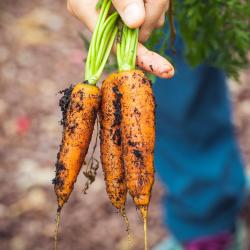How to Plan Meals Around Seasonal Ingredients
Eating seasonally has emerged as a delicious way to sync our lives with nature's rhythms. Planning meals around seasonal ingredients not only supports local farmers and reduces your carbon footprint, but it also ensures that you’re consuming the freshest and most flavorful produce available. Here’s a guide to mastering the art of seasonal meal planning, turning the bounty of each season into culinary delights.
Understanding Seasonality
Before diving into meal planning, it's important to understand what seasonal eating means. Fruits and vegetables grow according to climate patterns, and their peak seasons can vary depending on your geographical location. By mapping out what grows when in your area, you can build a foundation for your seasonal meal plans.
Benefits of Eating Seasonally
-
Enhanced Flavor and Nutrition: Produce tastes best when it’s freshly picked at its peak ripeness. Seasonal items are often richer in flavor and contain higher nutritional value compared to out-of-season items that are picked early for transport.
-
Cost-Effective: When fruits and vegetables are in abundance, prices drop. Eating seasonally can reduce your grocery bill.
-
Environmental Impact: Eating locally and seasonally means fewer food miles, which leads to a smaller carbon footprint.
-
Support for Local Economy: Purchasing seasonal produce often means buying from local farmers, thus boosting your local economy.
Steps to Plan Meals Around Seasonal Ingredients
1. Research Seasonal Produce
Begin by identifying the seasonal produce available in your region. Many online resources and local extension services offer guides to what's in season throughout the year. Farmers’ markets are also great places to see what’s currently being harvested.
2. Create a Seasonal Recipe Collection
Collect recipes that highlight seasonal ingredients. You might categorize them by season or main ingredient. Look for inspiration in cookbooks, online food blogs, and culinary apps. Pay attention to versatile recipes that can adapt to other seasonal produce.
3. Plan Weekly Menus
Once you have a decent collection of recipes, start planning your meals weekly. Balance your diet by incorporating a mix of seasonal fruits, vegetables, proteins, and grains. For example, a summer menu might feature fresh salads, grilled vegetables, and berries, while a fall menu could spotlight hearty soups and roasted root vegetables.
4. Prioritize Flexible Ingredients
Some ingredients are versatile across recipes, making them staples in seasonal meal planning. Think about items like lemons, garlic, and onions—they can enhance a variety of dishes.
5. Batch Cooking and Preservation
When you find yourself with an abundance of certain ingredients, consider batch cooking or preserving. Canning, freezing, and fermenting are excellent ways to enjoy seasonal flavors year-round. Make a big pot of tomato sauce to freeze or pickle seasonal cucumbers as a pantry staple.
6. Leverage Technology
There are numerous apps designed to facilitate meal planning. Tools like seasonal ingredient checklists, meal trackers, and even plant encyclopedia apps can help you stay organized and inspired.
7. Stay Flexible
If you discover a new vegetable at the market, don’t hesitate to adapt your plan. Trying new foods adds excitement and can lead to new family favorites.
Sample Seasonal Meal Plan
Spring Menu:
- Asparagus and pea risotto
- Strawberry and spinach salad with balsamic dressing
- Lemon-herb roasted chicken
Summer Menu:
- Grilled zucchini and eggplant with feta
- Corn and tomato salad
- Berry parfait with mint
Fall Menu:
- Roasted butternut squash soup
- Apple and cheddar stuffed chicken breasts
- Warm kale salad with pears and walnuts
Winter Menu:
- Braised cabbage and sausage
- Roasted sweet potatoes with cinnamon
- Citrus and avocado salad
Conclusion
Meal planning with seasonal ingredients is more than a trend—it's a lifestyle choice that connects us to the earth, supports our communities, and enhances our culinary experiences. With just a bit of research and creativity, each season brings new flavors to explore and enjoy. Make the change to eating seasonally, and discover the joys and benefits of attuning your meals with nature's calendar.






















